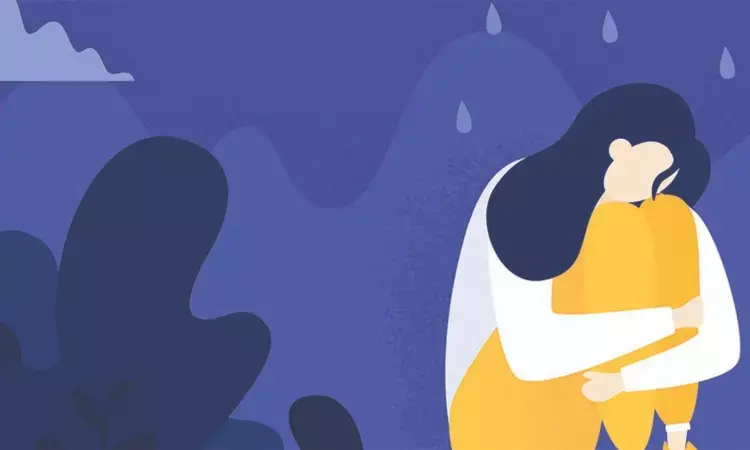- Home
- Medical news & Guidelines
- Anesthesiology
- Cardiology and CTVS
- Critical Care
- Dentistry
- Dermatology
- Diabetes and Endocrinology
- ENT
- Gastroenterology
- Medicine
- Nephrology
- Neurology
- Obstretics-Gynaecology
- Oncology
- Ophthalmology
- Orthopaedics
- Pediatrics-Neonatology
- Psychiatry
- Pulmonology
- Radiology
- Surgery
- Urology
- Laboratory Medicine
- Diet
- Nursing
- Paramedical
- Physiotherapy
- Health news
- Fact Check
- Bone Health Fact Check
- Brain Health Fact Check
- Cancer Related Fact Check
- Child Care Fact Check
- Dental and oral health fact check
- Diabetes and metabolic health fact check
- Diet and Nutrition Fact Check
- Eye and ENT Care Fact Check
- Fitness fact check
- Gut health fact check
- Heart health fact check
- Kidney health fact check
- Medical education fact check
- Men's health fact check
- Respiratory fact check
- Skin and hair care fact check
- Vaccine and Immunization fact check
- Women's health fact check
- AYUSH
- State News
- Andaman and Nicobar Islands
- Andhra Pradesh
- Arunachal Pradesh
- Assam
- Bihar
- Chandigarh
- Chattisgarh
- Dadra and Nagar Haveli
- Daman and Diu
- Delhi
- Goa
- Gujarat
- Haryana
- Himachal Pradesh
- Jammu & Kashmir
- Jharkhand
- Karnataka
- Kerala
- Ladakh
- Lakshadweep
- Madhya Pradesh
- Maharashtra
- Manipur
- Meghalaya
- Mizoram
- Nagaland
- Odisha
- Puducherry
- Punjab
- Rajasthan
- Sikkim
- Tamil Nadu
- Telangana
- Tripura
- Uttar Pradesh
- Uttrakhand
- West Bengal
- Medical Education
- Industry
No exposure to daylight can cause wintertime blues for some individuals

Summer is always happy time as people spend more time with family and friends, however winter even though is a festive season doesn't always end up as a happy time, leading to festive blues or seasonal blues.
From the summer solstice in June to the winter solstice in December, we lose daylight with each passing day. Once we get past the Fall Equinox, the hours we spend at night outweigh the number of hours of daylight. Just how some experience rainy day blues, some have this experience on a seasonal basis. The study is published in Harvard health.
Seasonal affective disorder (SAD), often referred to as seasonal depression, is a type of depression that is related to seasonal changes. Often times, this starts in the late fall or early winter when there is less sunlight. According to Timothy Gioe, MSN, APRN, PMHNP-BC at Crescent City Psychiatric, “with less sunlight, a hormone called Melatonin is released and can make patients feel more sleepy.” Gioe mentions that a drop in serotonin which regulates mood might also play a role, with the combination of the two leading to SAD.
Several factors can raise your risk for SAD. One is a family history of SAD or depression. Another is geography: people who live in northern states, where there's noticeably less light in fall and winter, tend to suffer more from SAD than those living in the south.
While anyone can suffer from SAD, it is more common with women and those who live in northern states. SAD is relatively common, with severe forms affecting an estimated 1-2% of the population. However, Gioe says that “milder forms may affect 10-20% of people” especially in northern climates.
There are several treatments for SAD. One treatment is light therapy, which exposes individuals to light that mimics natural sunlight. Gioe suggests that “lifestyle changes such as increasing exposure to sunlight, exercising regularly, and maintaining a regular schedule and routine are helpful in managing symptoms.” For those with severe cases, talk therapy and antidepressants can be effective.
Signs and symptoms of SAD includes:
- Feeling listless, sad or down most of the day, nearly every day
- Losing interest in activities you once enjoyed
- Having low energy and feeling sluggish
- Having problems with sleeping too much
- Experiencing carbohydrate cravings, overeating and weight gain
- Having difficulty concentrating
- Feeling hopeless, worthless or guilty
- Having thoughts of not wanting to live
- Fall and winter SAD
- Symptoms specific to winter-onset SAD, sometimes called winter depression, may include:
- Oversleeping
- Appetite changes, especially a craving for foods high in carbohydrates
- Weight gain
- Tiredness or low energy
In most cases, seasonal affective disorder symptoms appear during late fall or early winter and go away during the sunnier days of spring and summer. Less commonly, people with the opposite pattern have symptoms that begin in spring or summer. In either case, symptoms may start out mild and become more severe as the season progresses.
MSc. Neuroscience
Niveditha Subramani a MSc. Neuroscience (Faculty of Medicine) graduate from University of Madras, Chennai. Ambitious in Neuro research having worked in motor diseases and neuron apoptosis is interested in more of new upcoming research and their advancement in field of medicine. She has an engrossed skill towards writing and her roles at Medical dialogue include Sr. Content writer. Her news covers new discoveries and updates in field of medicine. She can be reached at editorial@medicaldialogues.in
Dr Kamal Kant Kohli-MBBS, DTCD- a chest specialist with more than 30 years of practice and a flair for writing clinical articles, Dr Kamal Kant Kohli joined Medical Dialogues as a Chief Editor of Medical News. Besides writing articles, as an editor, he proofreads and verifies all the medical content published on Medical Dialogues including those coming from journals, studies,medical conferences,guidelines etc. Email: drkohli@medicaldialogues.in. Contact no. 011-43720751


